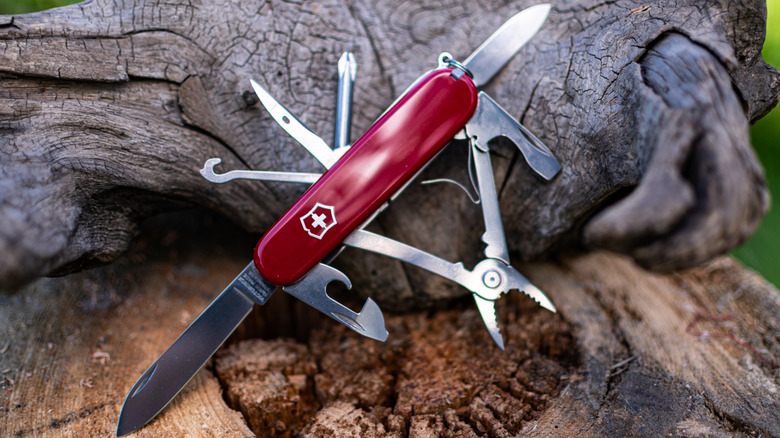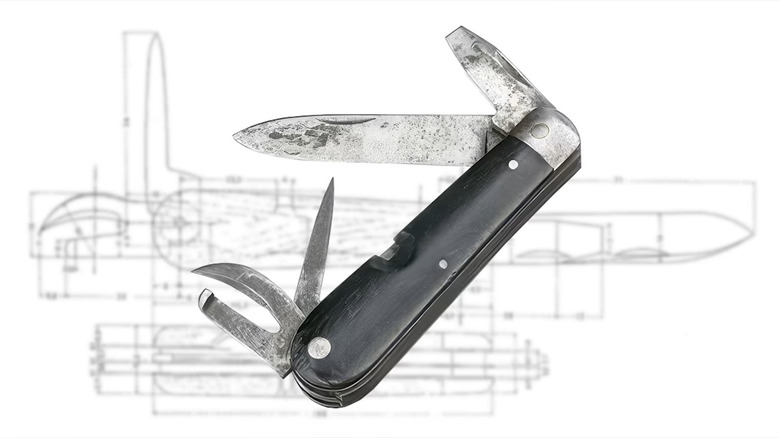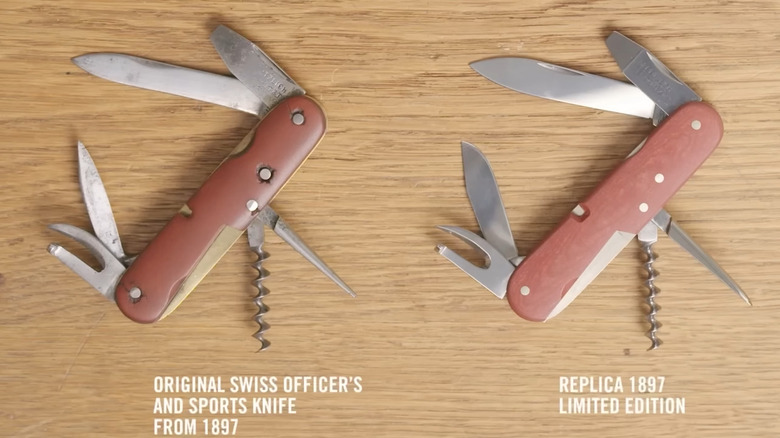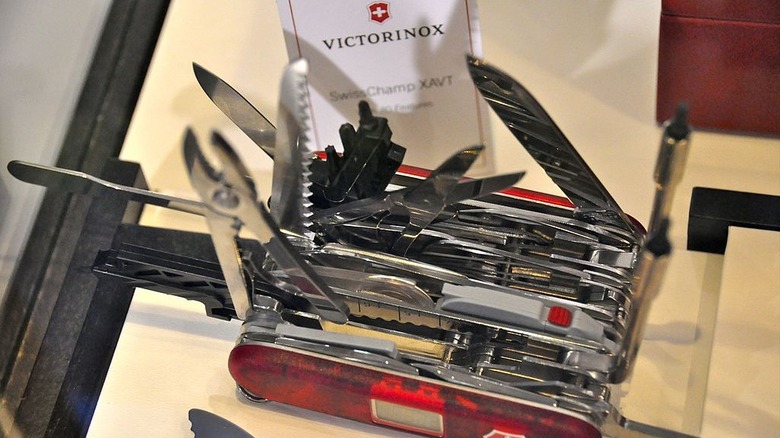A Brief History Of The Swiss Army Knife: The World's Most Recognizable Multi-Tool
Every good adventurer, mechanic, and anyone who fancies themselves MacGyver knows it's always wise to have a good multi-tool by your side. You just never know when you'll need to defuse a bomb, fix a cranky carburetor, or open a bottle of wine. If one of the many offerings from Leatherman, Gerber, or DeWalt (all in our Top 5 Best Multi-tools for Hiking and Camping list) don't float your boat, then perhaps the iconic firehouse red multibladed pocketknife adorned with the white Swiss federal cross logo is more your speed.
The Swiss Army knife (SAK) from Victorinox is a singular object with numerous uses that has become so globally recognizable that it's become a standard term when explaining almost any item that includes multiple levels of functionality (i.e., "the Swiss army knife of travel jackets" or "the Swiss Army knife of campers"). You know a thing works reliably and effectively when NASA has included it in their astronaut's survival kit since 1992. Not only does the SAK come in many different versions, all laden with an astounding number of different tools, but some of those — like the fish scaler — can be used in at least seven distinct ways.
So, let's hop into the Wayback Machine and see where this small but mighty pocketknife originated. To be clear, it wasn't the first "multi-tool." Similar products were made in Germany prior to the SAK's appearance, and multi-function utility knives — complete with a knife, spoon, fork, spike, spatula, and pick — were used by travelers in ancient Rome as far back as 200-300 AD.
The Model 1890 Swiss Army multi-tool
In 1867, the Swiss Army started issuing the bolt-action Vetterli rifle to its troops. It came with a flathead screwdriver because soldiers needed to maintain and keep the weapon functioning properly. Unfortunately, it just added to the growing collection of other "tools" the soldiers needed to carry, which already included things like a bayonet, knife, and can opener (to open canned food). So, the Swiss Army began workshopping a design that combined all the tools a soldier would need into one compact multi-tool.
In 1884, a young man named Karl Elsener – backed by his mother, Victoria — opened up a knife cutler's workshop in Ibach, located in the canton (or state) of Schwyz in Switzerland. In 1890, the army finally developed the Model 1890, which incorporated a carbon steel drop point blade, flathead screwdriver, can opener, and a hole-making awl into a tool with dark oak handles less than four inches long. Swiss manufacturers couldn't produce knives en mass, so they ordered the first 15,000 from German knife maker Wester & Co., who delivered them in October 1891.
Since Elsener was Swiss, he felt obligated to become the army's manufacturer. He created the Association of Swiss Master Cutlers (that still exists today) and, before 1891 was out, had taken over production of the Model 1890 and delivered his first batch of multi-tools to the Swiss Army. However, a second cutlery company in Switzerland — Paul Boéchat & Cie — entered the picture in 1893 and won its first contract from the Swiss Army to make the same Model 1890. Oddly, both companies branded their knives with the same cross and shield logo.
Two Swiss companies made the same product with the same logo
With his first goal achieved, he immediately began improving the utility knife. In 1896, he developed a revolutionary design that let him attach tools to both sides of the handle. It, too, came with a drop point blade, flathead screwdriver, can opener, and awl, but also included a small secondary blade and a corkscrew — that little twisty tool with a sharp, pointed end that somehow fit perfectly into the backside of the knife. Elsener registered the new and improved multi-tool with reddish wood fiber grips called "The Officer's and Sports Knife" the following year (1897).
Interestingly, this particular model was never included in the Swiss Army's military version but instead was discreetly sold to officers who wanted to crack open a bottle of wine with their more refined dinners. This 6-tooled version would go on to become known the world over as the "Original Swiss Army Knife." But now, the Swiss needed to eliminate the confusion of having two competing manufacturers making the same product with the same logo. So, in 1908, they gave half the contract to Elsener's company and half to Boéchat & Cie. This allowed Elsener to claim he was the "original" SAK while Boéchat & Cie could still say it was a "genuine" SAK. This deal remained in place until 2005.
Today, Elsener's original company is called Victorinox (a combination of his mother's name and "Inox," the French word for stainless steel), while Boéchat & Cie is now Wenger. Victorinox acquired Wenger in 2005, so for over 100 years, the two companies made the same product.
Does the Swiss Army actually use Swiss Army Knives?
Another bout of notoriety occurred in 1960 when the Soviet Union shot down a Lockheed U-2 spy plane as it snapped photos of ICBM sites over mother Russia. The Soviet government, keen on announcing to the world that the U.S. was spying on them, displayed many of the items obtained from the wreckage, including a little red utility knife they proclaimed was, in fact, CIA spy equipment. The SAK soon became known as a "tool for secret agents, spies, and heroes."
Switzerland is a country with compulsory military service, so every available man between the ages of 18 and 30 must serve, and each recruit receives a SAK when they begin their service. Over the years, as many as twenty countries worldwide have used versions in their respective militaries, including the Netherlands, Germany, France, Malaysia, and yes — the United States. Today, over 100 models exist in various sizes and the number of tools included, from the standard Swiss Army Knife with just a few to one that sports an astounding 73 different functions. Although Victorinox acquired Wenger in 2005, both are still in business, but only Victorinox makes the SAK.
One final (funny) note about this globally iconic multi-tool — the original German name was "Schweizer Offiziersmesser," while in Swiss-German regions, it was called a "Sackmesser." During World War II, American soldiers bought them as souvenirs but had trouble pronouncing those German/Swiss names, so they began referring to it as a "Swiss Army Knife," and the name stuck.



